An inbox for notifications
An average phone user receives 50 notifications per day. As a tech-savvy person — I receive about 150-200 notifications per day. It's a lot more than I had expected.
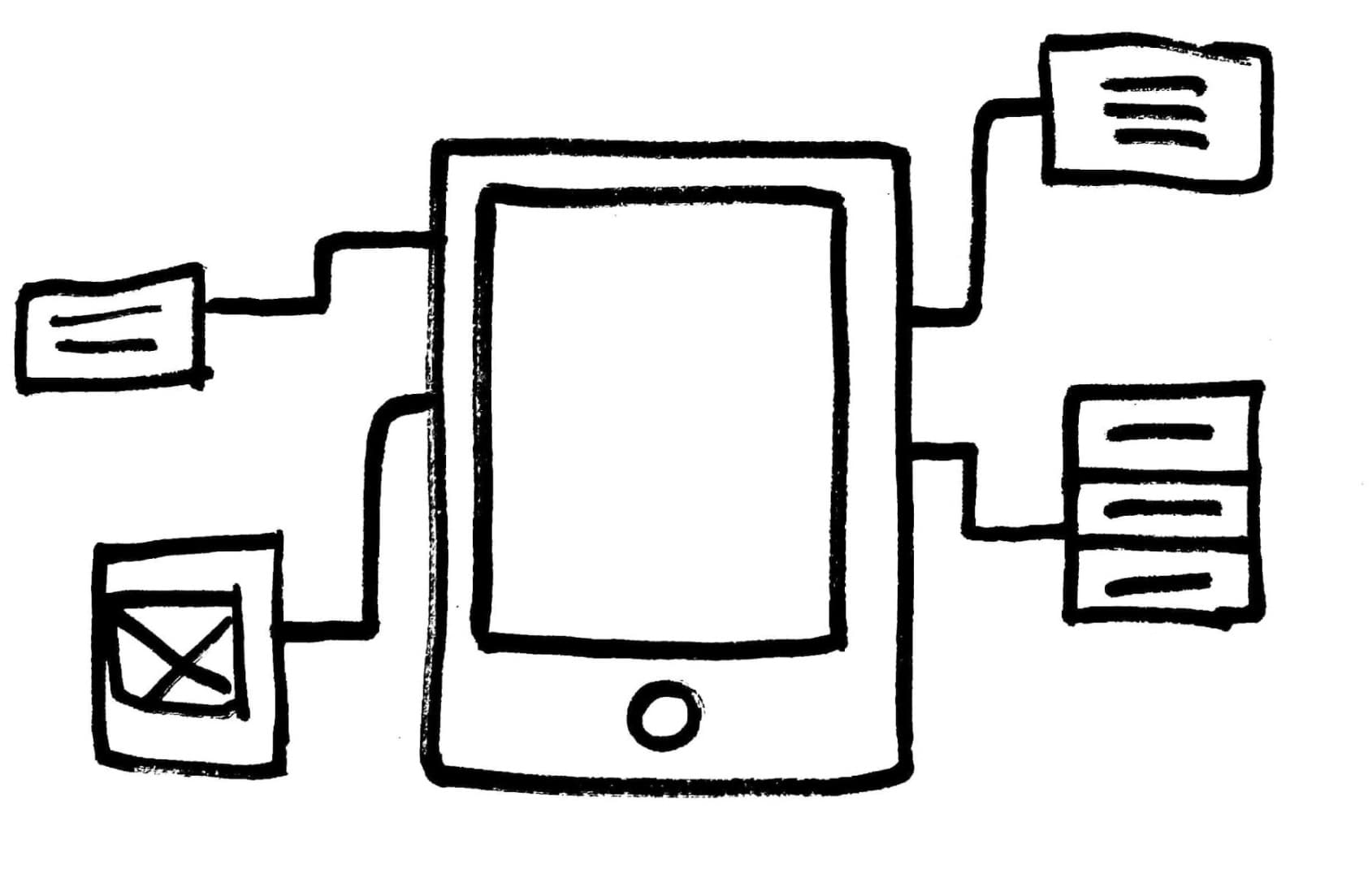 Notifications control the way we use our phones
Notifications control the way we use our phones
Distraction vs. Value
Research shows that mobile push notifications are as distracting as phone calls. Considering the cost of task switching, each notification could cause 28 minutes of distraction. Even if 2% of incoming notifications are detrimental to our focus, we're probably losing 60+ minutes of focus per day to attention residue. In the span of a year, that's 25 work-days of attention spent on...mobile push notifications.
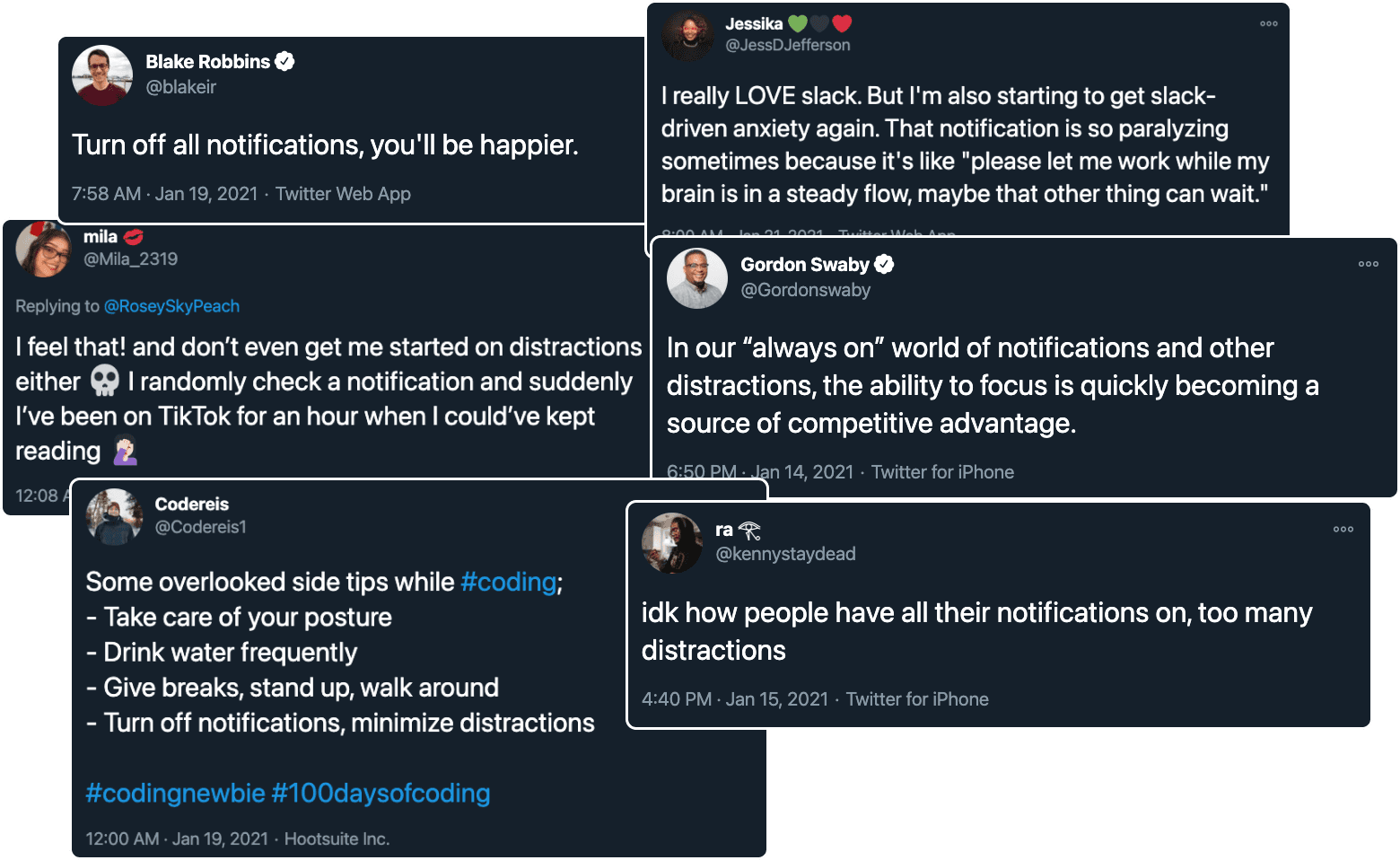
When you think about notifications that you receive across all your digital devices, you can see the magnitude of the problem. If we were to count all our notifications in a day, I'm certain that the number would surprise us. This post dives deeper into it.
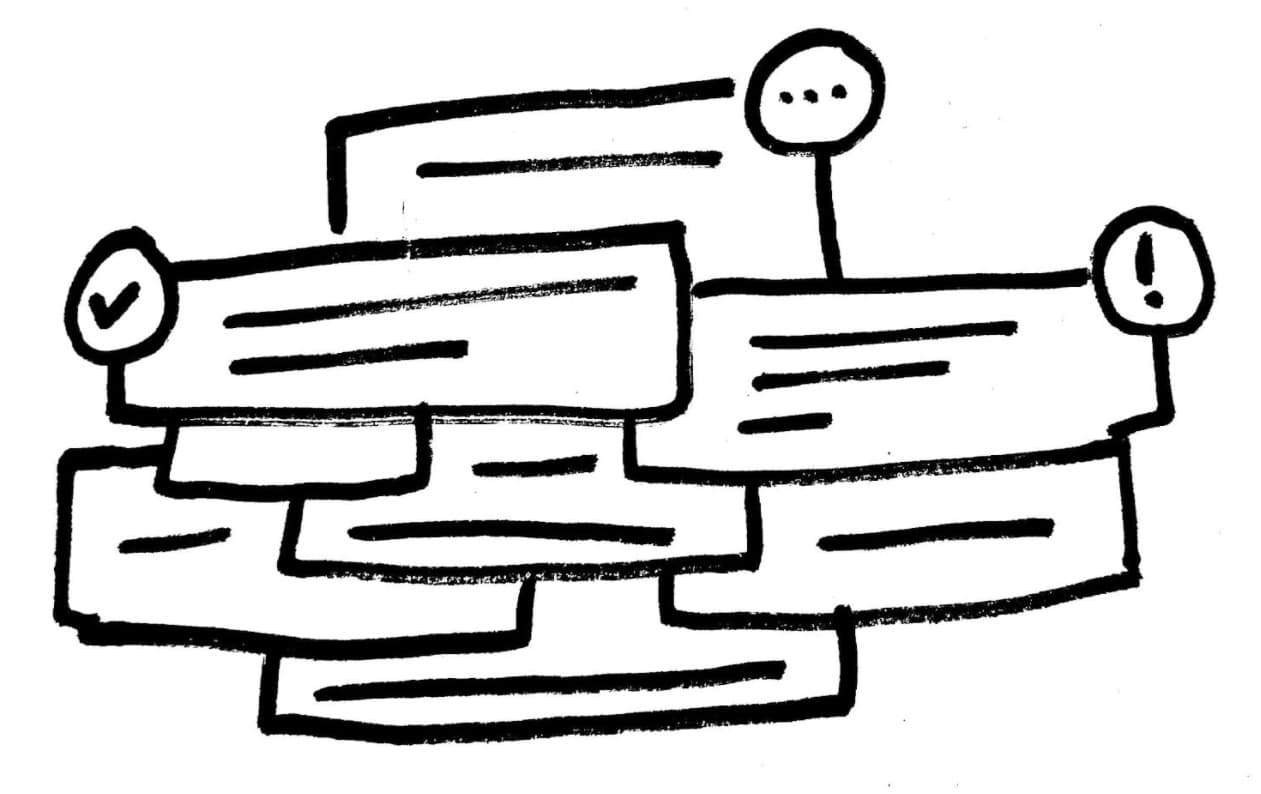 Based on my personal phone stats, I often have days with 300+ notifications.
Based on my personal phone stats, I often have days with 300+ notifications.
While 82% of people don't always find notifications useful, we can't afford to totally ignore push notifications. Sometimes it could be an important message from a friend, family member, or coworker.
The challenge here is that, by default, our phones treat all notifications the same. We hear the same distinct ping and buzz regardless of the content of the message and the context that it's being sent or received in.
A Design and Business Opportunity
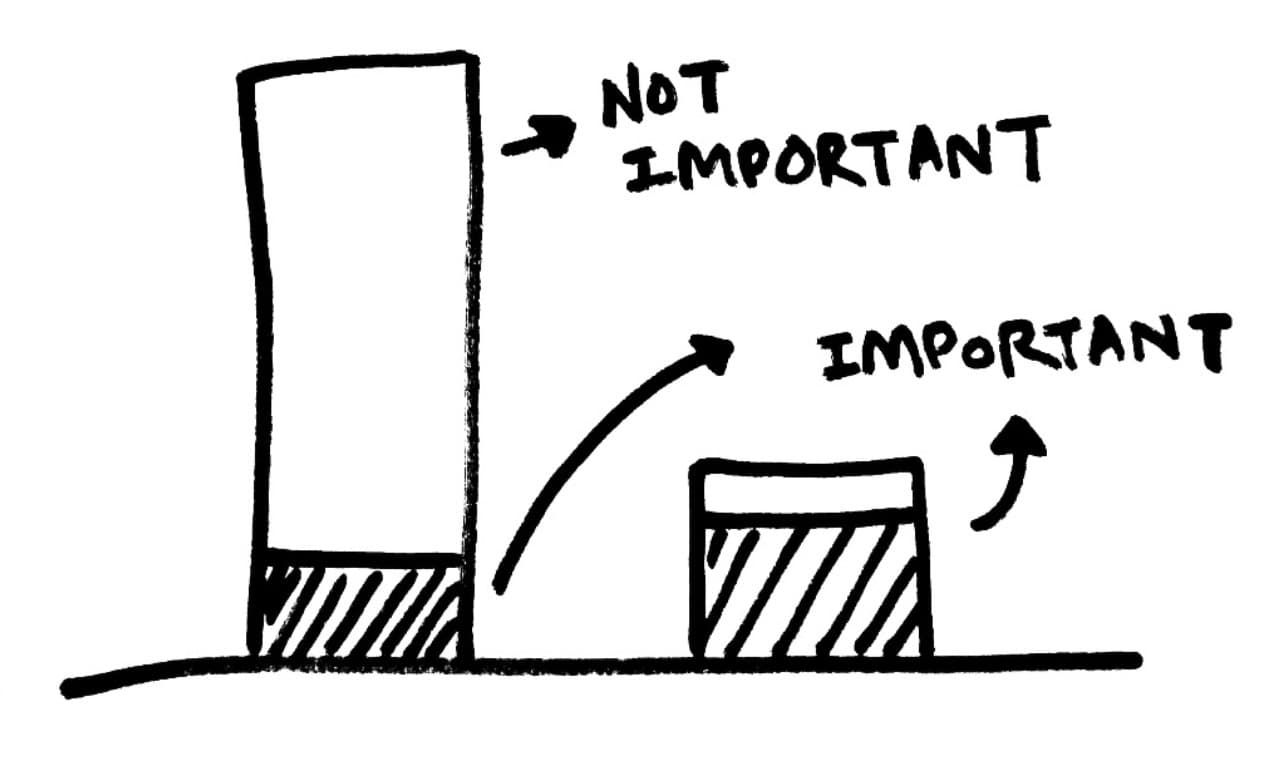 Notifications can be noisy while sporadically adding value.
Notifications can be noisy while sporadically adding value.
How might we help people manage incoming notifications, and easily control what is worth their immediate attention?
There's an opportunity here to design a solution that makes using our phones a 10x more delightful experience. A solution that can work across devices — enabling people to focus on their daily lives without having to check their phone every few minutes to manually scan for urgent or important communication.
Current Alternatives
All the alternatives that I've tried in the past have failed to address this challenge:
-
Silent Mode: Quickly stopped this due to the FOMO of missing important or urgent communication.
-
Disabling Notifications: Doesn't always work if I rely on certain types of notifications for personal or professional use. I would hate to miss a text message about a re-scheduled meeting, or a Facebook message from my friend who needs some help urgently.
-
Focus mode (Android): This is my current solution, albeit a partial one. I set a fixed schedule on my phone to mute specific applications, but I still have a lot of FOMO and find myself clicking through various applications to make sure I haven't missed important messages from friends or family.
Solving for notifications
One way to solve for this is to take inspiration from email inboxes. Imagine a Gmail app but for your notifications across devices.
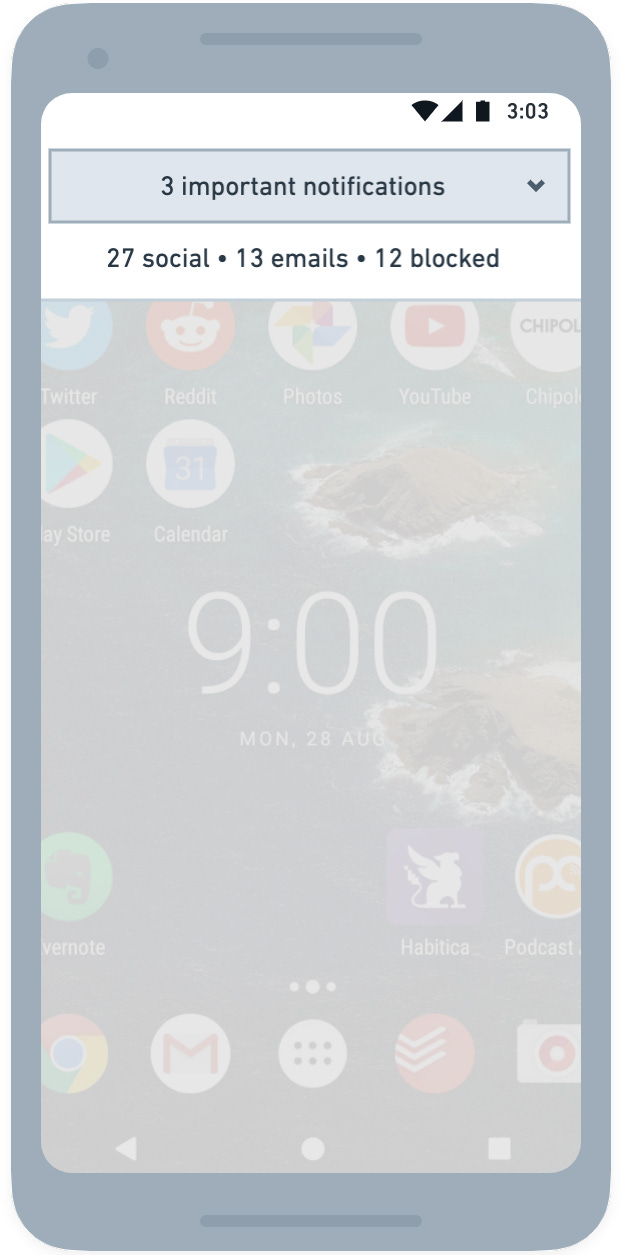
An inbox for notifications which prioritizes notifications based on user-defined rules and custom alerts.
The inbox would then be prioritized by user-created rules to filter notifications based on variables such as:
-
Name of the sender
-
Date, time and days
-
Application Name
-
Notification Keywords (title, content, actions, etc)
These rules could also have custom alerts with control over the notification sound, volume and haptic feedback (gentle hum, sharp ping, etc).
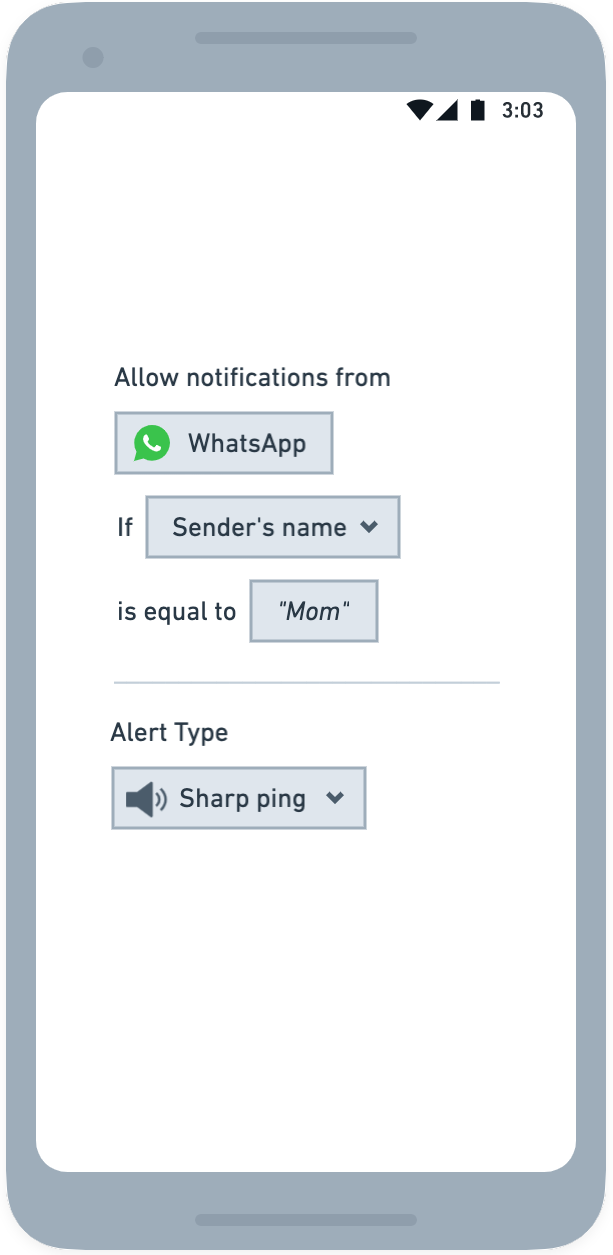
Examples of notification rules:
Allow notifications on "all applications" from any contact named "Mom", and play a sharp ping sound to alert.
Block notifications on "WhatsApp" from "all contacts" during "weekdays 9am — 5pm", and play a "soft buzz" to alert.
Allow notifications on "iMessage" from "these 4 contacts" on "all days", and play a "low-volume fun bounce" to alert.
Allow notifications from "Facebook" that have the keyword 'Marketplace'.
Technical Feasibility
Android: Based on previous apps like Snowball (hit 500K installs on Android; acquired), Notification Inbox, and Notifix — the Android ecosystem seems to allow for a lot of flexibility in developing applications that take over the Notification Tray and can read notification content as well.
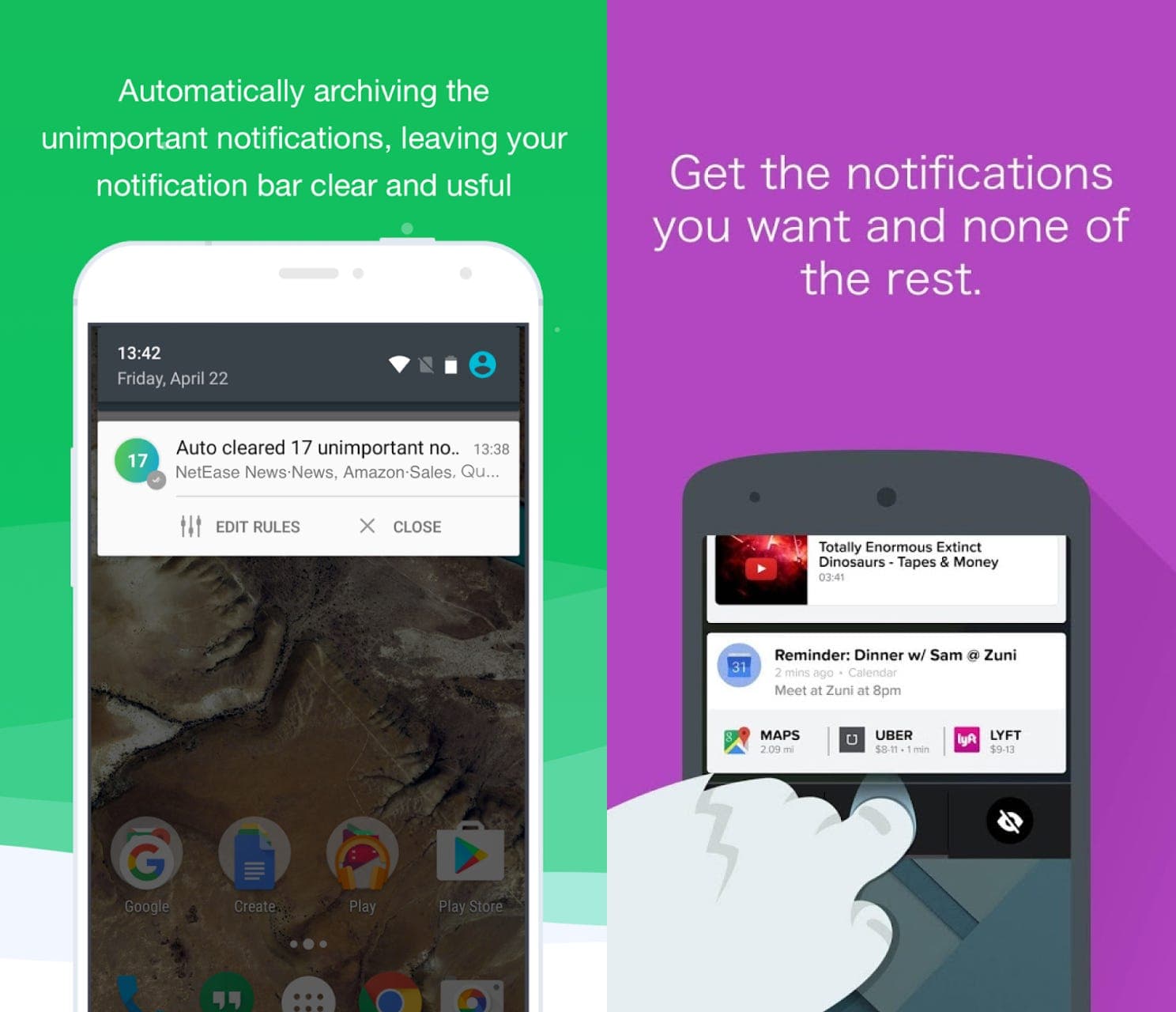 Previous app attempts: Notification Inbox (left) and Snowball (right)
Previous app attempts: Notification Inbox (left) and Snowball (right)
iOS: Seems to offer a lot less control over the Notification Center and how notifications are delivered. It does have more granular controls that touch on some aspects of the concept above. Ropig has an interesting approach that could be technically dissected and maybe applied to manage iOS notifications.
Positioning
The product could be targeted towards productivity geeks, digital power users, or makers that require deep focus to work (eg: developers and designers). The positioning could be inspired by the new wave of productivity tools with apps like Centered.
With a design-heavy product, the value could be priced as a premium app at $10+ per month.
Future
With this foundation, there are more ways to push the concept even further:
-
Block all notifications by default, and allow exceptions based on rules.
-
Provide a notification wizard to set preferences whenever a new application is downloaded.
-
Create categories to group notifications in buckets like: 'Important', 'Social', 'Work' based on custom rules.
-
The same concept applies beyond phones — to other devices like our laptops. If I was in a meeting on my computer, my phone could adjust notifications based on the type and duration of calendar event.
Closing thoughts
Both Apple and Google are best positioned to solve for this problem at the OS-level. While this could be a startup idea, this could also be a valuable mental model for teams at these companies. They could build on some of their recent experiments like Android's Focus Mode and iOS' Screen Time app.
Thanks for reading this far — subscribe to receive new posts from me about building and launching internet products :)